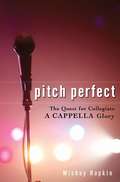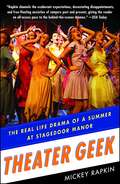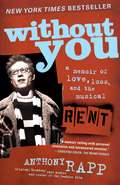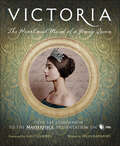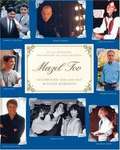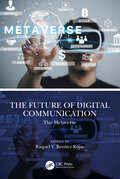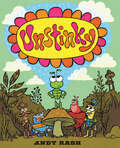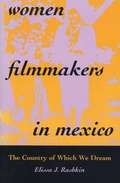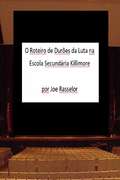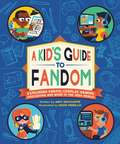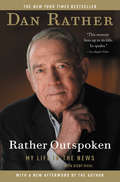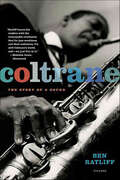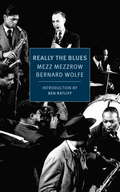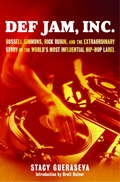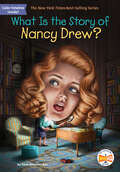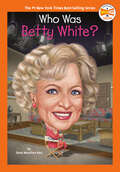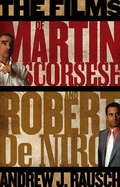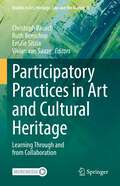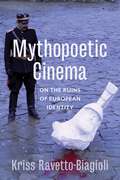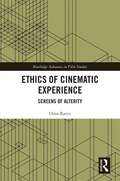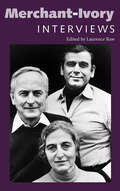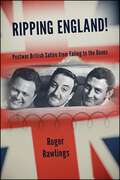- Table View
- List View
Pitch Perfect: The Quest for Collegiate A Cappella Glory
by Mickey RapkinPitch Perfectis a behind-the-scenes look at the bizarre, often inspiring world of collegiate a cappella groups. The first collegiate a cappella group, the Yale Whiffenpoofs, was founded by Cole Porter back in 1909. But what had been largely an Ivy League phenomenon has, in the past fifteen years, exploded. And it’s not what you think. There are now more than 1,200 a cappella groups at colleges across the country. The very best of these collegiate groups square off in the annual International Championship of Collegiate A Cappella—a showdown marked by wrenching close calls and exhilarating triumphs. And, really, where else can you hear Michael Jackson’s “Bad” in four-part harmony? In Pitch Perfect, GQ editor Mickey Rapkin follows a season in a cappella through all its twists and turns, covering the breathtaking displays of vocal talent, the groupies (yes, a cappella singers have groupies), the rockstar partying (and run-ins with the law), and all the bitter rivalries. Along the way are encounters with boldfaced names such as President George W. Bush, Prince, David Letterman, Barack Obama, Barbra Streisand, Hillary Clinton, Marisa Tomei, Amanda Bynes, Nick Lachey, Merv Griffin, Jim Carrey, Microsoft’s Paul Allen, John Legend, and Jessica Biel. At the heart of the narrative are three a cappella groups whose interactions are anything but harmonious: the historic Tufts Beelzebubs, founded more than forty years ago with 40,000 albums sold since—and struggling to record a new album that lives up to the hype; Divisi of the University of Oregon, a relatively new, all-female group attempting to overcome a loss in the 2005 championship; and the University of Virginia Hullabahoos, the so-called bad boys of collegiate a cappella, who will attempt to compete on a higher level this year while retaining their casual soul. Bringing a lively new twist to America’s fascination with talent showdowns and peerless performers, Pitch Perfect is sure to strike a chord with readers.
Theater Geek: The Real Life Drama of a Summer at Stagedoor Manor, the Famous Performing Arts Camp
by Mickey RapkinWhat do Natalie Portman, Robert Downey, Jr., Zach Braff, and Mandy Moore have in common? Before they were stars, they were campers at Stagedoor Manor, the premier summer theater camp for children and teenagers. Founded in 1975, Stagedoor continues to attract scores of young performers eager to find kindred spirits, to sing out loud, to become working actors--or maybe even stars. Every summer for the past thirty-five years, a new crop of campers has come to the Catskills for an intense, often wrenching introduction to professional theater. (The camp produces thirteen full-scale productions during each of its three sessions.) These kids come from varying backgrounds--the offspring of Hollywood players from Nora Ephron to Bruce Willis work alongside kids on scholarship. Some campers have agents, others are seeking representation. When Mickey Rapkin, a senior editor at GQ and self-proclaimed theater fanatic, learned about this place, he fled Manhattan for an escape to upstate New York. At Stagedoor, he tracked a trio of especially talented and determined teen actors through their final session at camp. Enter Rachael Singer, Brian Muller, and Harry Katzman, three high school seniors closing out their sometimes sheltered Stagedoor experiences and graduating into the real world of industry competition and rejection. These veteran campers--still battling childhood insecurities, but simultaneously searching for that professional gig that will catapult them to fame--pour their souls into what might be their last amateur shows. Their riveting stories are told in Theater Geek, an eye-opening, laugh-out-loud chronicle full of drama and heart, but also about the business of training kids to be professional thespians and, in some cases, child stars. (The camp has long acted as a farm system for Broadway and Hollywood, attracting visits from studio executives and casting directors.) Via original interviews with former and current campers and staff--including Mandy Moore, Zach Braff, and Jon Cryer--Rapkin also recounts Stagedoor Manor's colorful, star-studded history: What was Natalie Portman's breakout role as a camper? What big-time Hollywood director, then barely a teenager, dated a much older Stagedoor staff member? Why did Courtney Love (at Stagedoor visiting her daughter) get into an argument with a hot dog vendor who had set up shop at the camp? Theater Geek leads readers through the triumphs and tragedies of the three senior campers' final summer in an absorbing, thought-provoking narrative that reveals the dynamic and inspiring human beings who populate this world. It also explores what the proliferation of theater camps says about our celebrity-obsessed youth and our most basic but vital need to fit in. Through the rivalry, heartbreak, and joy of one summer at Stagedoor Manor, Rapkin offers theater geeks of all ages a dishy, illuminating romp through the lives of serious child actors. Rich, insightful, and thoroughly entertaining, Theater Geek pulls back the curtain on an elite and intriguing world to reveal what's really at its core: children who simply love to perform.
Without You: A Memoir of Love, Loss, and the Musical Rent
by Anthony RappAnthony Rapp captures the passion and grit unique to the theatre world as he recounts his life-changing experience in the original cast of the Pulitzer Prize-winning musical Rent. Anthony had a special feeling about Jonathan Larson's rock musical from his first audition, so he was thrilled when he landed a starring role as the filmmaker Mark Cohen. With his mom's cancer in remission and a reason to quit his newly acquired job at Starbucks, his life was looking up. When Rent opened to thunderous acclaim off Broadway, Rapp and his fellow cast members knew that something truly extraordinary had taken shape. But even as friends and family were celebrating the show's success, they were also mourning Jonathan Larson's sudden death from an aortic aneurysm. By the time Rent made its triumphant jump to Broadway, Larson had posthumously won the 1996 Pulitzer Prize. When Anthony's mom began to lose her battle with cancer, he struggled to balance the demands of life in the theatre with his responsibility to his family. Here, Anthony recounts the show's magnificent success and his overwhelming loss. He also shares his first experiences discovering his sexuality, the tension it created with his mother, and his struggle into adulthood to gain her acceptance. Variously marked by fledgling love and devastating loss, piercing frustration and powerful enlightenment, Without You charts the course of Rapp's exhilarating journey with the cast and crew of Rent as well as the intimacies of his personal life behind the curtain.
Without You
by Anthony RappAnthony Rapp captures the passion and grit unique to the theatre world as he recounts his life-changing experience in the original cast of the Pulitzer Prize-winning musical Rent. Anthony had a special feeling about Jonathan Larson's rock musical from his first audition, so he was thrilled when he landed a starring role as the filmmaker Mark Cohen. With his mom's cancer in remission and a reason to quit his newly acquired job at Starbucks, his life was looking up. When Rent opened to thunderous acclaim off Broadway, Rapp and his fellow cast members knew that something truly extraordinary had taken shape. But even as friends and family were celebrating the show's success, they were also mourning Jonathan Larson's sudden death from an aortic aneurysm. By the time Rent made its triumphant jump to Broadway, Larson had posthumously won the 1996 Pulitzer Prize. When Anthony's mom began to lose her battle with cancer, he struggled to balance the demands of life in the theatre with his responsibility to his family. Here, Anthony recounts the show's magnificent success and his overwhelming loss. He also shares his first experiences discovering his sexuality, the tension it created with his mother, and his struggle into adulthood to gain her acceptance. Variously marked by fledgling love and devastating loss, piercing frustration and powerful enlightenment, Without You charts the course of Rapp's exhilarating journey with the cast and crew of Rent as well as the intimacies of his personal life behind the curtain.
Without You
by Anthony RappAnthony Rapp captures the passion and grit unique to the theatre world as he recounts his life-changing experience in the original cast of the Pulitzer Prize-winning musical Rent. Anthony had a special feeling about Jonathan Larson's rock musical from his first audition, so he was thrilled when he landed a starring role as the filmmaker Mark Cohen. With his mom's cancer in remission and a reason to quit his newly acquired job at Starbucks, his life was looking up. When Rent opened to thunderous acclaim off Broadway, Rapp and his fellow cast members knew that something truly extraordinary had taken shape. But even as friends and family were celebrating the show's success, they were also mourning Jonathan Larson's sudden death from an aortic aneurysm. By the time Rent made its triumphant jump to Broadway, Larson had posthumously won the 1996 Pulitzer Prize. When Anthony's mom began to lose her battle with cancer, he struggled to balance the demands of life in the theatre with his responsibility to his family. Here, Anthony recounts the show's magnificent success and his overwhelming loss. He also shares his first experiences discovering his sexuality, the tension it created with his mother, and his struggle into adulthood to gain her acceptance. Variously marked by fledgling love and devastating loss, piercing frustration and powerful enlightenment, Without You charts the course of Rapp's exhilarating journey with the cast and crew of Rent as well as the intimacies of his personal life behind the curtain.
Victoria: The Heart and Mind of a Young Queen
by Helen RappaportForeword by Daisy Goodwin The official companion to ITV’s hotly anticipated new drama, Victoria delves into the private writings of the young Queen Victoria, painting a vivid picture of the personal life of one of England’s greatest monarchs. From the producers of Poldark and Endeavour, ITV’s Victoria follows the early years of the young queen’s reign, based closely on Victoria’s own letters and journals. Now explore this extensive collection in greater depth, and discover who Victoria really was behind her upright public persona.At only eighteen years old, Victoria ascended the throne as a rebellious teenager and gradually grew to become one of the most memorable, unshakeable and powerful women in history. The extensive writings she left behind document this personal journey and show how she triumphed over scandal and corruption. Written by author and Victoria historical consultant, Helen Rappaport, and including a foreword by Daisy Goodwin—acclaimed novelist and scriptwriter of the series—Victoria details the history behind the show. Revealing Victoria’s own thoughts about the love interests, family dramas and court scandals during her early reign, it also delves into the running of the royal household, the upstairs-downstairs relationships, and what it was like to live in Victorian England.Full of beautiful photography from the series and genuine imagery from the era, Victoria takes you behind the palace doors and discover the girl behind the queen.
Mazel Tov: Celebrities' Bar and Bat Mitzvah Memories
by Jill RappaportCelebrity journalist Jill Rappaport and photographer Linda Solomon offer an intimate glimpse of the bar or bat mitzvahs of some of the most talented people in entertainment, politics and business. This remarkable book brings together stories and never-before-seen family photos of a variety of public figures, as they look back on their thirteen-year-old selves and reminisce about the celebration that marked their transition into adulthood. The wonderfully candid interviews document deeply poignant, and often hilariously awkward, moments in these very public lives. Interviewees include Jeremy Piven, Senator Joseph Lieberman, Marlee Matlin, Richard Dreyfuss, Ronald Perelman, Howie Mandel, Gene Shalit, Harvey Fierstein, Judy Gold, Larry King, Donny Deutsch, Michael Kors, Charles Grodin, Josh and Andy Bernstein, and many others. Their experiences run the gamut: Kirk Douglas decided to be bar mitzvahed twice, while others, like Noah Wyle, always wanted one but never had the chance. There are stories of bar mitzvahs, bat mitzvahs, confirmations, and the only documented "bark" mitzvah, held in honor of two beloved pets. Though the stories vary greatly in their detail, they all express a common appreciation for values and traditions that have been passed down through the generations. Illustrated with photos pulled from family albums as well as contemporary portraits, Mazel Tov is an appealing tribute to the enduring bonds of faith and family.
The Future of Digital Communication: The Metaverse
by Raquel V. Benítez RojasThis collection of essays explores the present and future of digital communication through a range of interdisciplinary approaches, all of which focus on the so-called metaverse. The metaverse is a combination of multiple elements of technology – including virtual reality, augmented reality, and video – where users "live" within a digital universe. The vision for this new universe is that its users can work, play, and stay connected with friends through everything. Such a vision is hinted at in existing phenomena such as online game universes.
Unstinky
by Andy RashAndy Rash brings the laughs in this humorous story of a stinkbug who can't stink.Bud is a happy stinkbug, except when it comes to stinking contests.He always seems to lose to champions like P. U. Bottoms, Lord Stinkington, and The Fumigator.Every time they make smells like OUTHOUSE, GYM SOCK, and ARMPIT, poor Bud ends up smelling like FLOWERS, or FRESH-BAKED BREAD, or CANDY CANE.Stinking just isn't Bud's THING. But what IS his thing?With an ending as fresh as a daisy, and funnier than any funny smell, Andy Rash puts a hilarious spin on a tale of following your nose to happiness.
Women Filmmakers in Mexico: The Country of Which We Dream
by Elissa J. RashkinWomen filmmakers in Mexico were rare until the 1980s and 1990s, when women began to direct feature films in unprecedented numbers. Their films have won acclaim at home and abroad, and the filmmakers have become key figures in contemporary Mexican cinema. In this book, Elissa Rashkin documents how and why women filmmakers have achieved these successes, as she explores how the women's movement, film studies programs, governmental film policy, and the transformation of the intellectual sector since the 1960s have all affected women's filmmaking in Mexico. <P><P> After a historical overview of Mexican women's filmmaking from the 1930s onward, Rashkin focuses on the work of five contemporary directors--Marisa Sistach, Busi Cortés, Guita Schyfter, María Novaro, and Dana Rotberg. Portraying the filmmakers as intellectuals participating in the public life of the nation, Rashkin examines how these directors have addressed questions of national identity through their films, replacing the patriarchal images and stereotypes of the classic Mexican cinema with feminist visions of a democratic and tolerant society.
O Roteiro de Durões da Luta na Escola Secundária Killimore
by Joe RasselorAgora, o clássico e-book de wrestling, Wrestling Thugs of Killimore High School, foi escrito como roteiro. Possui muitas linhas opcionais e terminações alternativas. Leia, aja e lute por sua conta e risco.
A Kid's Guide to Fandom: Exploring Fan-Fic, Cosplay, Gaming, Podcasting, and More in the Geek World!
by Amy RatcliffeHelp young fans get in touch with their inner geeks with the ultimate guidebook for creating, sharing, and enjoying the world of fandom.Being a fan is a big deal. Whether it's comics, video games, podcasts, cosplay, books, films, or something else, there are so many ways to share and celebrate with the things that you love. So, it's high time for a guide to help young fans navigate the world of fandom and its many flourishing communities—from fan works to cosplay, gaming, podcasting, and more!Filled with history, trivia, tips and advice to getting started, and insight from creators and artists from across pop culture and specializing in a wide variety of mediums, A Kid's Guide to Fandom is the perfect geeky primer for young fans. Organized by type of fandom medium, each chapter offers a brief introduction, facts, history sidebars, and easy to digest information on how to:Create Fan Fic or Fan ArtDesign and Create a CosplayStart a PodcastDesign and Create Games (video games, tabletop, and other role playing games)Find and Create Supportive CommunitiesFind and Attend Conventions Plus, interviews with popular creatives like Alan Gratz, Erin Lefler, Jen Bartel, Daniel José Older, Rose Eveleth, Kat Kruger, Jordan Dené Ellis, Liz Crowder, and more.
Rather Outspoken: My Life in the News
by Dan Rather Digby DiehlThis memoir by Dan Rather -- one of the most pre-eminent journalists of our time -- is told in a straightforward and conversational manner so that you hear his distinctive voice on every page. Rather, -- who has won every prestigious journalism award in his distinguished career -- discusses all the big stories from his decades of reporting. This very personal accounting includes (but is certainly not limited to) his dismissal from CBS, the Abu Ghraib story, the George W. Bush Air National Guard controversy, his coverage of the JFK assassination, the origin of "Hurricane Dan" as well as inside stories about all the top personalities Dan has either interviewed or worked with over his remarkable career. The book will also include Dan's thoughts and reflections on the state of journalism today and what he sees for its future, as well as never-before-revealed personal observations and commentary.
Coltrane: The Story of a Sound
by Ben RatliffJohn Coltrane left an indelible mark on the world, but what was the essence of his achievement that makes him so prized forty years after his death? What were the factors that helped Coltrane become who he was? And what would a John Coltrane look like now--or are we looking for the wrong signs?In this deftly written, riveting study, New York Times jazz critic Ben Ratliff answers these questions and examines the life of Coltrane, the acclaimed band leader and deeply spiritual man who changed the face of jazz music. Ratliff places jazz among other art forms and within the turbulence of American social history, and he places Coltrane not just among jazz musicians but among the greatest American artists.
Really the Blues
by Ben Ratliff Mezz Mezzrow Bernard WolfeMezz Mezzrow was a Jewish boy from the slums of Chicago who learned to play the clarinet in reform school and pursued a life in music and a life of crime. He moved from Chicago to New Orleans to New York, working in brothels and bars, bootlegging, dealing drugs, getting hooked, doing time, producing records, and playing with the greats, among them Louis Armstrong, Bix Beiderbecke, and Fats Waller. Really the Blues, the jive-talking memoir that Mezzrow wrote at the insistence of, and with the help of, the novelist Bernard Wolfe, is the story of an unusual and unusually American life, and a picture of a man who moved freely across racial boundaries when few could or did, "the odyssey of an individualist. . . the saga of a guy who wanted to make friends in a jungle were everyone was too busy making money."
Def Jam, Inc.: Russell Simmons, Rick Rubin, and the Extraordinary Story of the World's Most Influential Hip-hop Label
by Brett Ratner Stacy GuerasevaIn the early '80s, the music industry wrote off hip-hop as a passing fad. Few could or would have predicted that the improvised raps and raw beats busting out of New York City's urban underclass would one day become a multimillion-dollar business and one of music's most lucrative genres. Among those few were two visionaries: Russell Simmons, a young black man from Hollis, Queens, and Rick Rubin, a Jewish kid from Long Island. Though the two came from different backgrounds, their all-consuming passion for hip-hop brought them together. Soon they would revolutionize the music industry with their groundbreaking label, Def Jam Records.Def Jam, Inc. traces the company's incredible rise from the NYU dorm room of nineteen-year-old Rubin (where LL Cool J was discovered on a demo tape) to the powerhouse it is today; from financial struggles and scandals-including The Beastie Boys's departure from the label and Rubin's and Simmons's eventual parting-to revealing anecdotes about artists like Slick Rick, Public Enemy, Foxy Brown, Jay-Z, and DMX. Stacy Gueraseva, former editor in chief of Russell Simmons's magazine, Oneworld, had access to the biggest players on the scene, and brings you real conversations and a behind-the-scenes look from a decade-and a company-that turned the music world upside down. She takes you back to New York in the '80s, when late-night spots such as Danceteria and Nell's were burning with young, fresh rappers, and Simmons and Rubin had nothing but a hunch that they were on to something huge.Far more than just a biography of the two men who made it happen, Def Jam, Inc. is a journey into the world of rap itself. Both an intriguing business history as well as a gritty narrative, here is the definitive book on Def Jam--a must read for any fan of hip-hop as well as all popular-culture junkies.
What Is the Story of Nancy Drew? (What Is the Story Of?)
by Dana M. Rau Who HQUncover the mystery of Nancy Drew and how the beloved teenage detective came to be in this new addition to the What Is the Story Of? series which follows the same format as the #1 New York Times Best-Selling Who Was? series.When the very modern character of Nancy Drew first appeared in 1930, no one had a clue that she would remain a star for the next century! To this day, Nancy is still the main character in new TV shows, movies, and books. What makes her so interesting to so many generations of readers? Nancy can do it all! She's a daring teenage girl who solves mysteries, expertly drives her famous blue car, cooks like a gourmet chef, swims like a pro, and more! Since her first appearance, the prodigy detective has inspired young readers to believe that they can do it all, too.
Who Was Betty White? (Who HQ Now)
by Dana Meachen Rau Who HQLearn about the remarkable life of actress and comedian Betty White, a pioneer of early television with a seven-decade career, in this title in the Who HQ Now series featuring newsmakers and trending topics.From 1939 to 2021, actress Betty White was one of the most beloved performers in the entertainment industry. She starred in fan-favorite television shows like The Golden Girls and The Mary Tyler Moore Show, and also blockbuster movies like Toy Story 4 and The Proposal. Over her decades-long career, Betty White won Emmy awards, was named an honorary mayor of Hollywood, earned a star on the Walk of Fame, and set the Guinness World Record for woman with the longest TV career ever. Off-screen, Betty advocated for animal rights, racial justice, and LGBTQIA+ rights. Learn about her legendary life in this book for young readers.
The Films of Martin Scorsese and Robert De Niro
by Andrew J RauschIn 1973, early in their careers, Martin Scorsese and Robert De Niro collaborated for the first time. Over the next few decades, they worked together on seven more movies, many of which brought them both acclaim and awards. And while successful director and actor pairings have occurred throughout the history of film, few have fashioned so many works of enduring value as these two artists. In little more than two decades, Scorsese and De Niro produced eight features, including the classics Taxi Driver, Raging Bull, and GoodFellas. In The Films of Martin Scorsese and Robert De Niro, Andrew J. Rausch examines the creative output of this remarkable pair, from their initial offering, Mean Streets, to their most recent film together, Casino. Rausch looks at their relationship as individual artists who worked together to create cinematic magic, as well as the friendship that was forged nearly 40 years ago. Drawing upon interviews and other sources, Rausch goes behind the scenes of their eight films, providing insi
Participatory Practices in Art and Cultural Heritage: Learning Through and from Collaboration (Studies in Art, Heritage, Law and the Market #5)
by Christoph Rausch Ruth Benschop Emilie Sitzia Vivian Van SaazeThis edited volume analyzes participatory practices in art and cultural heritage in order to determine what can be learned through and from collaboration across disciplinary borders. Following recent developments in museology, museum policies and practices have tended to prioritize community engagement over a traditional focus on collecting and preserving museal objects. At many museal institutions, a shift from a focus on objects to a focus on audiences has taken place. Artistic practices in the visual arts, music, and theater are also increasingly taking on participatory forms. The world of cultural heritage has seen an upsurge in participatory governance models favoring the expertise of local communities over that of trained professionals. While museal institutions, artists, and policy makers consider participation as a tool for implementing diversity policy, a solution to social disjunction, and a form of cultural activism, such participation has also sparked a debate on definitions, and on issues concerning the distribution of authority, power, expertise, agency, and representation. While new forms of audience and community engagement and corresponding models for “co-creation” are flourishing, fundamental but paralyzing critique abounds and the formulation of ethical frameworks and practical guidelines, not to mention theoretical reflection and critical assessment of practices, are lagging.This book offers a space for critically reflecting on participatory practices with the aim of asking and answering the question: How can we learn to better participate? To do so, it focuses on the emergence of new norms and forms of collaboration as participation, and on actual lessons learned from participatory practices. If collaboration is the interdependent formulation of problems and entails the common definition of a shared problem space, how can we best learn to collaborate across disciplinary borders and what exactly can be learned from such collaboration?
Mythopoetic Cinema: On the Ruins of European Identity
by Kriss Ravetto-BiagioliIn Mythopoetic Cinema, Kriss Ravetto-Biagioli explores how contemporary European filmmakers treat mythopoetics as a critical practice that questions the constant need to provide new identities, a new Europe, and with it a new European cinema after the fall of the Soviet Union. Mythopoetic cinema questions the perpetual branding of movements, ideas, and individuals. Examining the work of Jean-Luc Godard, Alexander Sokurov, Marina Abramović, and Theodoros Angelopoulos, Ravetto-Biagioli argues that these disparate artists provide a critical reflection on what constitutes Europe in the age of neoliberalism. Their films reflect not only the violence of recent years but also help question dominant models of nation building that result in the general failure to respond ethically to rising ethnocentrism.In close readings of such films as Sokurov's Russian Ark (2002) and Godard's Notre Musique (2004), Ravetto-Biagioli demonstrates the ways in which these filmmakers engage and evaluate the recent reconceptualization of Europe's borders, mythic figures, and identity paradoxes. Her work not only analyzes how these filmmakers thematically treat the idea of Europe but also how their work questions the ability of the moving image to challenge conventional ways of understanding history.
Ethics of Cinematic Experience: Screens of Alterity (Routledge Advances in Film Studies)
by Orna RavivEthics of Cinematic Experience: Screens of Alterity deals with the relationship between cinema and ethics from a philosophical perspective, finding an intrinsic connection between film spectatorship and the possibility of being open to different modes of alterity. The book’s main thesis is that openness to otherness is already found in the basic structures of cinematic experience. Through a close examination of the ethical relevance of the philosophy of Maurice Merleau-Ponty, Stanley Cavell, Emmanuel Levinas and Gilles Deleuze to cinema studies, Ethics of Cinematic Experience: Screens of Alterity pursues the question of how film can open the viewer to what is not her, and so bring her to encounter otherness in a way that is unique to cinematic experience. The book sees ethics as not just the subject, content or story of a film but part of its aesthetic structure. Accompanied by readings of films mainly from mainstream cinema, each chapter focuses on a different aspect of the encounter with alterity through cinema. The book gives particular attention to how theoretical discussion of the cinematic close-up can lead to ethical insights into the status of both the human and the non-human in film, and thus lead to an understanding of the relationships the viewer makes with them. The book is a helpful resource for students and scholars interested in the relationship between philosophy, film and ethics, and is appropriate for students of philosophy and media and cultural studies.
Merchant-Ivory: Interviews (Conversations with Filmmakers Series)
by Laurence RawMerchant-Ivory: Interviews gathers together, for the first time, interviews made over a span of fifty years with director James Ivory (b. 1928), producer Ismail Merchant (1936–2005), and screenwriter Ruth Prawer Jhabvala (1927–2013). Beginning with their earliest work in India, and ending with James Ivory's last film, The City of Your Final Destination (2009), the book traces their career, while offering valuable insights into their creative filmmaking process. The volume serves as a corrective to the prevailing critical orthodoxy attached to Merchant-Ivory's work, which tends to regard them as being solely concerned with historically accurate costumes and settings. As independent filmmakers, they have developed an idiosyncratic approach that resists facile classification. Merchant-Ivory have insisted on maintaining their independence. More importantly, this book shows how Merchant-Ivory have always taken considerable care in casting their films, as well as treating actors with respect. This is a deliberate policy, designed to bring out one of the triumvirate's principal thematic concerns, running throughout their work—the impact of the “clash of cultures” on individuals. Partly this has been inspired by their collective experiences of living and working in different cultures. They do not offer any answers to this issue; rather they believe that their task is simply to raise awareness; to make filmgoers conscious of the importance of cultural sensitivities that assume paramount significance in any exchange, whether verbal or nonverbal.
The View from Babylon: The Notes of a Hollywood Voyeur
by Donald RawleyRawley paints the definitive portrait of Hollywood in the '90s. A lifelong L.A. inhabitant, Rawley takes you on a tour beyond the city's edge - from Malibu's shining white beaches to lonely desert communities to big-studio arenas where life speeds by in "Hollywood time." He introduces a memorable cast of characters - a wistful, recovering methamphetamine addict; a loving father and dedicated ex-soldier driven by heartbreaking failure; the always glamorous, never satisfied Hollywood denizens at one of the industry's "big-big-big" premieres. The View from Babylon is a portrait of the city that reflects our deepest dreams and darkest desires.
Ripping England!: Postwar British Satire from Ealing to the Goons (SUNY series, Horizons of Cinema)
by Roger RawlingsRipping England! investigates a fertile moment for British satire—the period between 1947 and 1953, which produced the films Passport to Pimlico, Kind Hearts and Coronets, and The Lavender Hill Mob, as well as the seminal radio program The Goon Show. Against the postwar background of fading empire, universal rationing, and the implementation of a welfare state, these satires laid the foundation for a new British cultural identity later fleshed out by the Angry Young Men, the Movement poets, the Social Realists, and those involved in the satire boom of the 1960s, which lives on even to this day.The peculiarity of these satires and the British identity they shaped is better understood when seen in relief against postwar cinematic cultures of Italy, France, and the United States. Roger Rawlings places postwar British film in the context of contemporaneous European national film movements and contrasts it with Hollywood's comedies and satires of the same period. British satires of the late forties and early fifties held up a mirror to a nation that was in the throes of change, moving from a colonial empire to an inward-turning island culture. Ripping England! looks at the all too often neglected miracle of postwar British cinema and popular culture.
